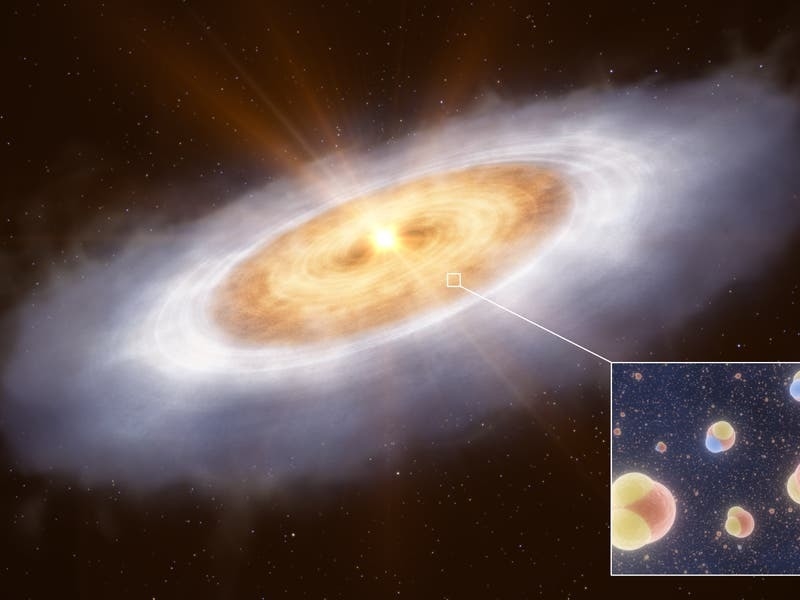Scientists believe they have uncovered more evidence that water on Earth may be older than the sun.
An international team of researchers used data from ground-based telescopes to ascertain the chemical composition of a young star, known as V883 Orionis, in the Orion constellation.
They detected chemical signatures of heavy water – which is around 10% more denser than ordinary water – in the star’s rotating disc of gas and dust.
The researcher said their work, published in the journal Nature, suggests V883 Orionis may be the “missing link” scientists have been waiting for to understand more about how the solar system – and Earth – got its water.

He added: “The composition of the water in the disc is very similar to that of comets in our own solar system.”
The researchers used the Atacama Large Millimeter/Submillimeter Array (Alma) – made up of 66 radio telescopes in the Atacama Desert of northern Chile – to observe V883 Orionis, which is 1,300 light-years away from Earth.
V883 Orionis is a protostar, which means it is still gathering mass in the form of rotating discs of gas and dust from its parent molecular cloud.
Water is frozen in the outermost part of this disc so the instruments were unable to detect it.
However, an outburst of energy from the star heated the inner disc to a temperature where water is gaseous – so astronomers were able to identify its chemical signatures.
Data from the telescopes allowed astronomers to determine the composition of water as well as map its distribution within the disc.
They said the V883 Orionis disc contains at least 1,200 times the amount of water in all Earth’s oceans.
Water with high deuterium content can only form under specific conditions where there is enough energy to power the reaction that binds hydrogen, deuterium and oxygen.
Heavy water occurs naturally on Earth but in smaller quantities – at a proportion of about one heavy water molecule in 3,200 normal water molecules.
As normal and heavy water form under different conditions, their ratio can be used to trace when and where the water was formed.
In this instance, scientists believe Earth got its water from icy asteroids or comets from outside the solar system.
Mr Tobin said: “We can think of the path of water through the universe as a trail.
“We know what the endpoints look like, which are water on planets and in comets, but we wanted to trace that trail back to the origins of water.”
He added: “Until now, the chain of water in the development of our solar system was broken.
“V883 Ori is the missing link in this case and we now have an unbroken chain in the lineage of water from comets and protostars to the interstellar medium.”






